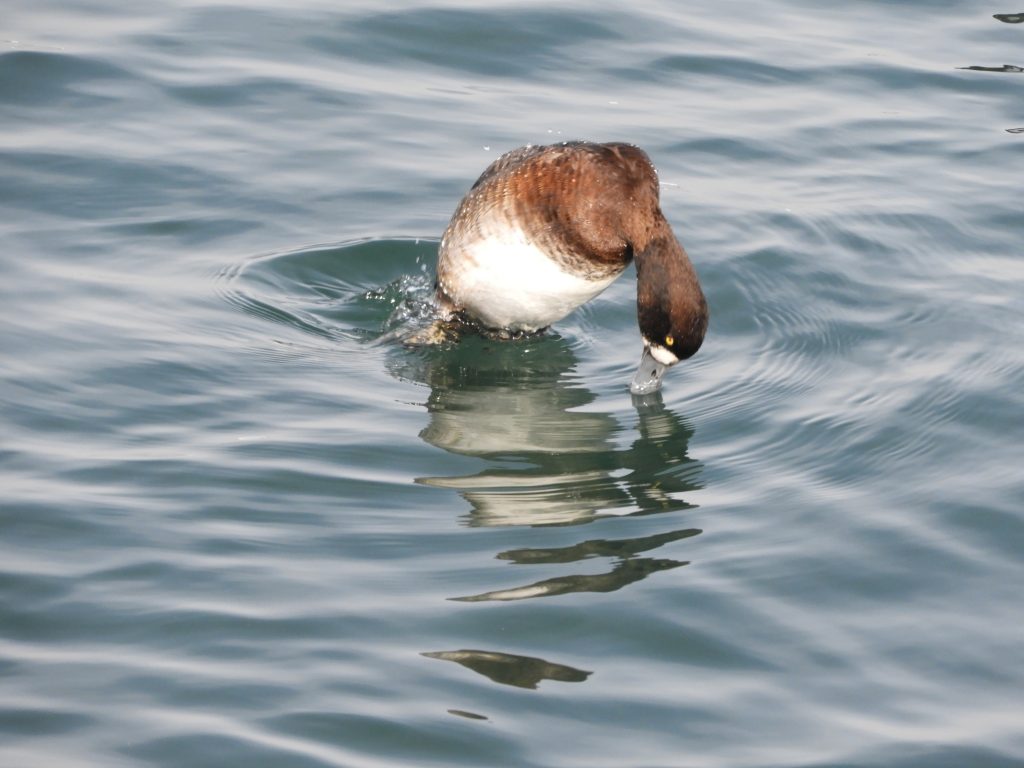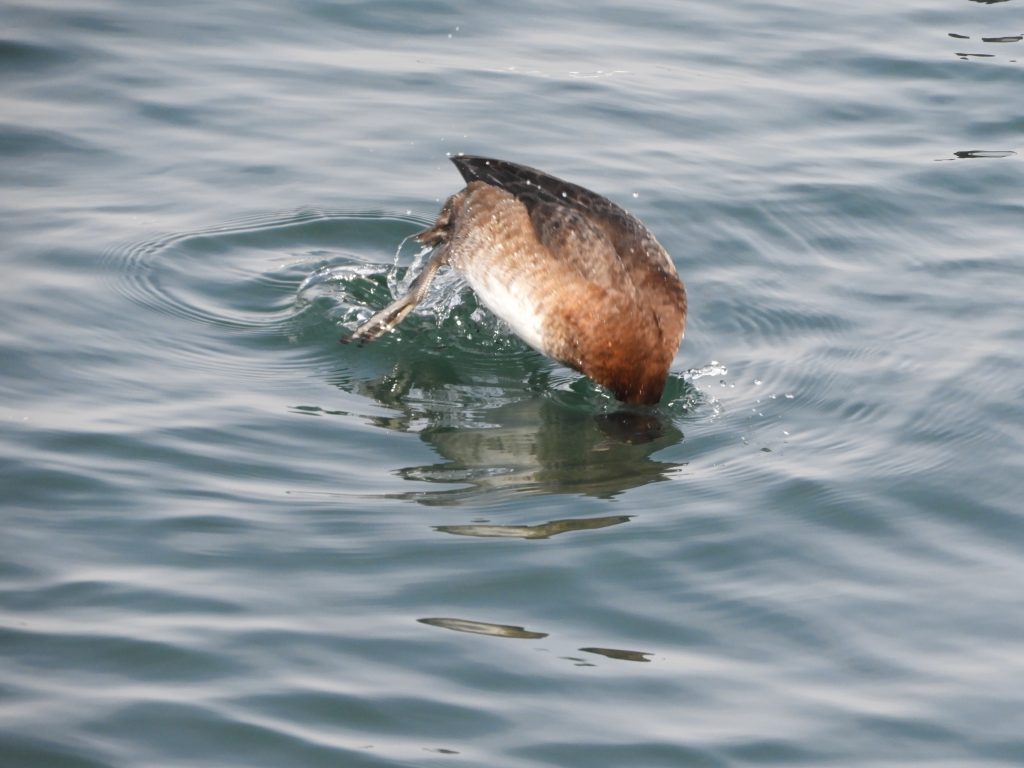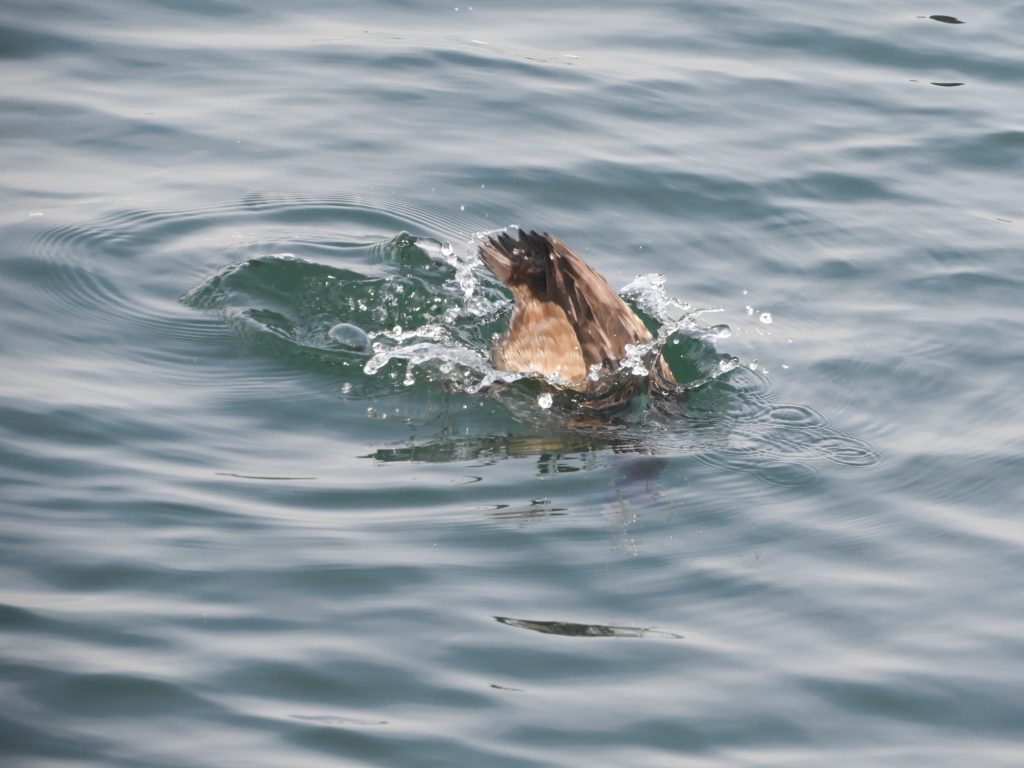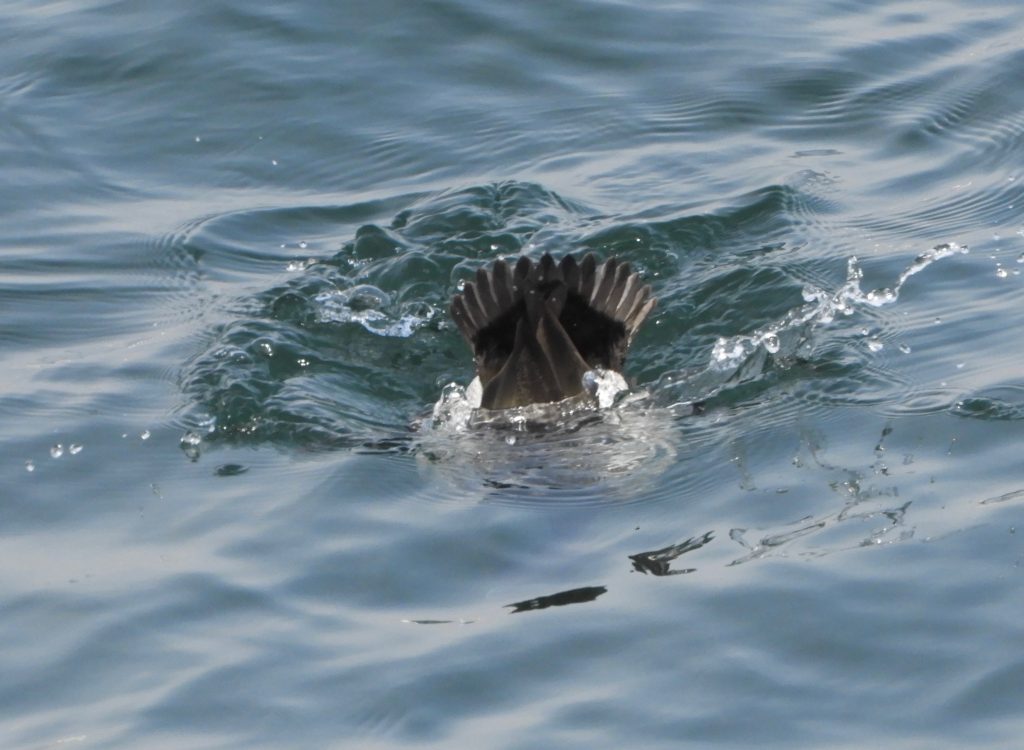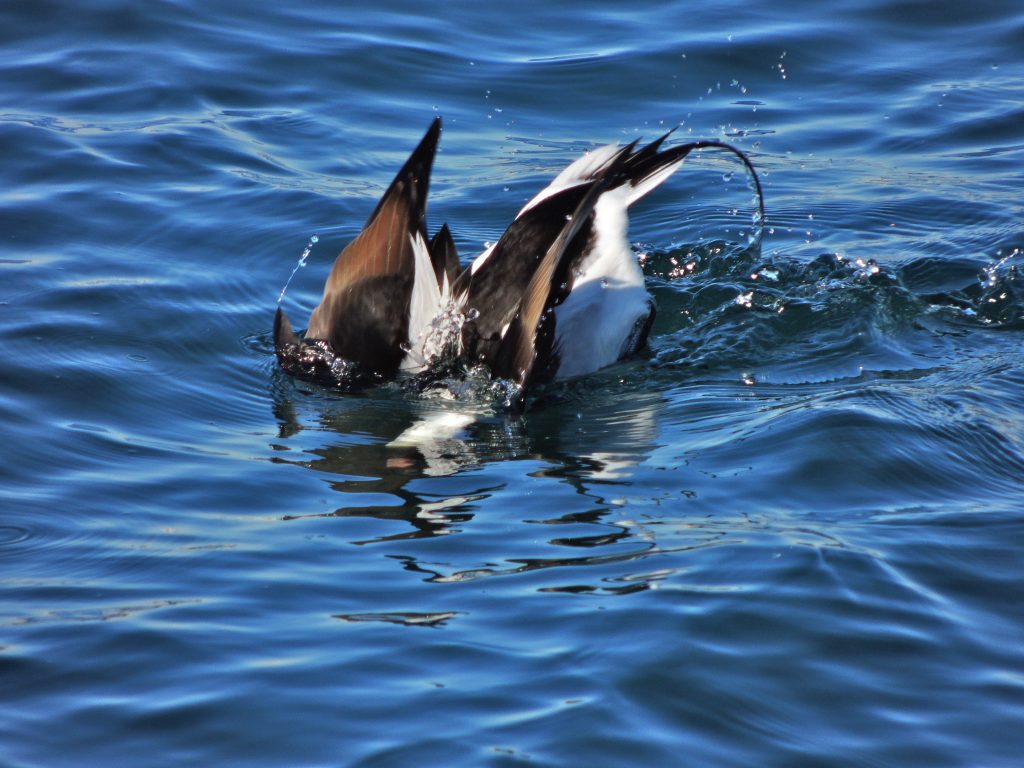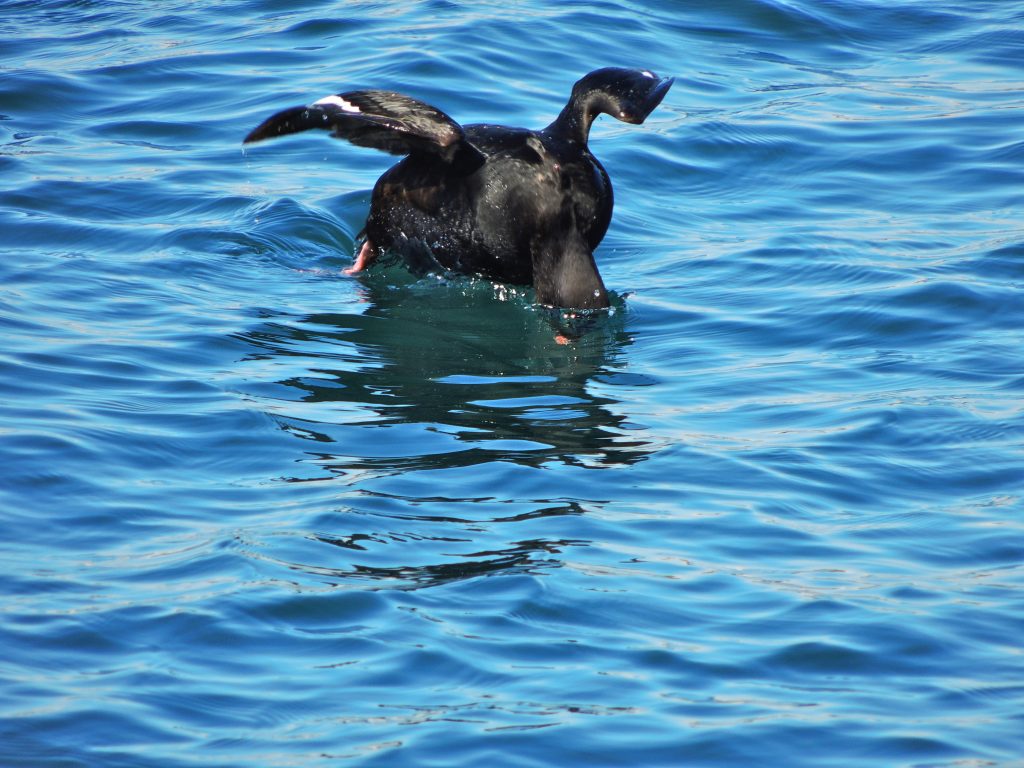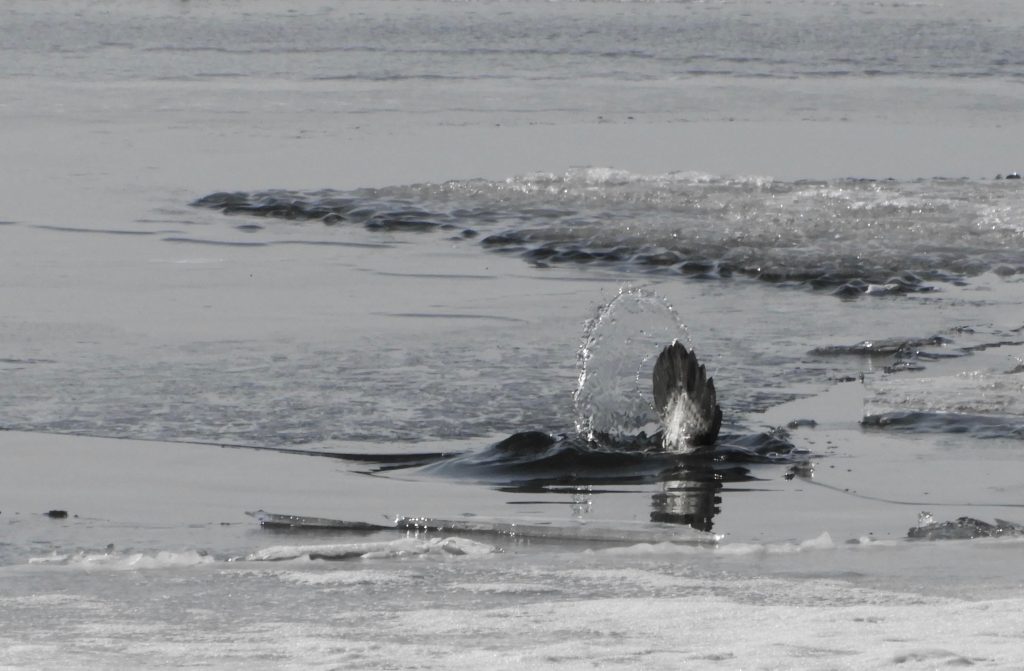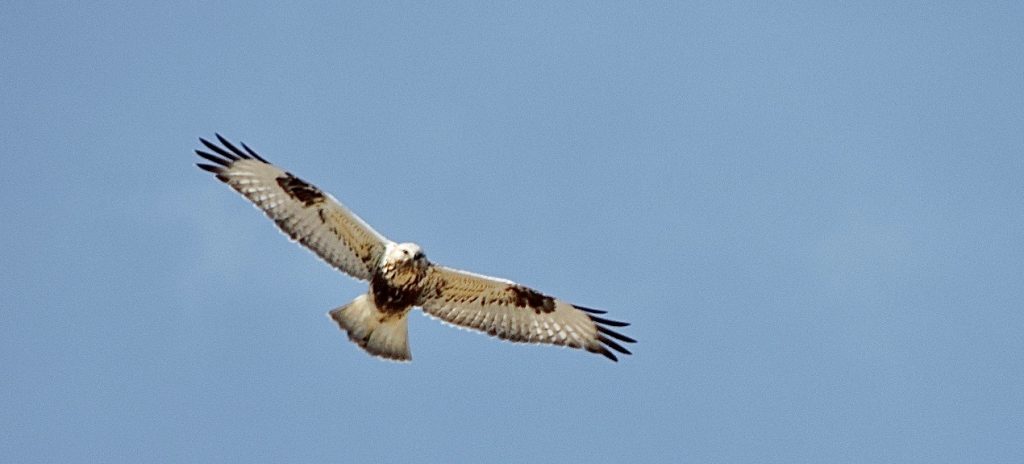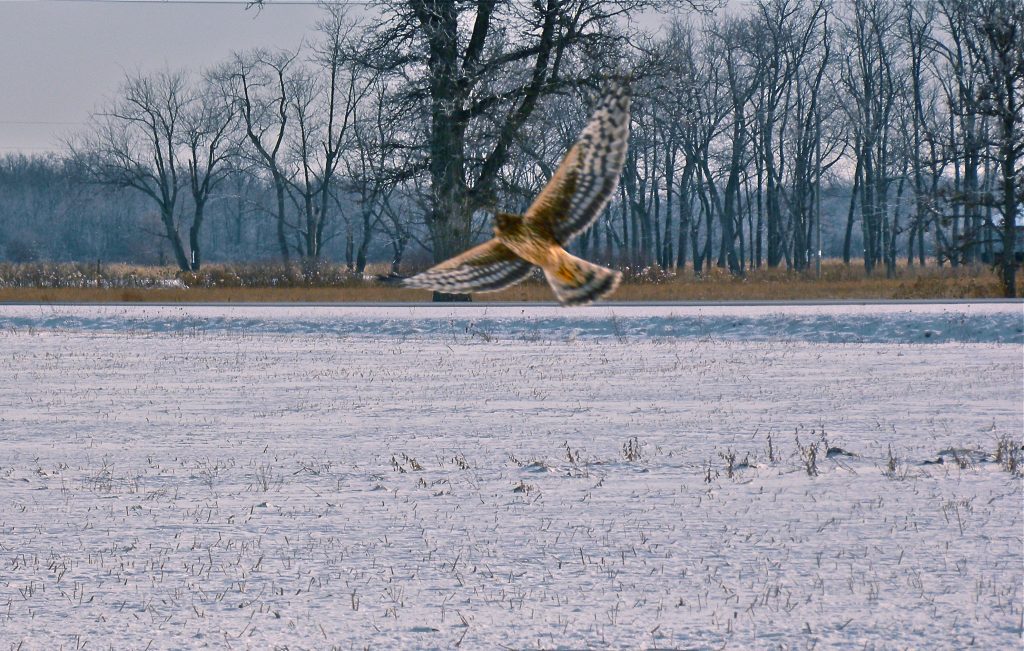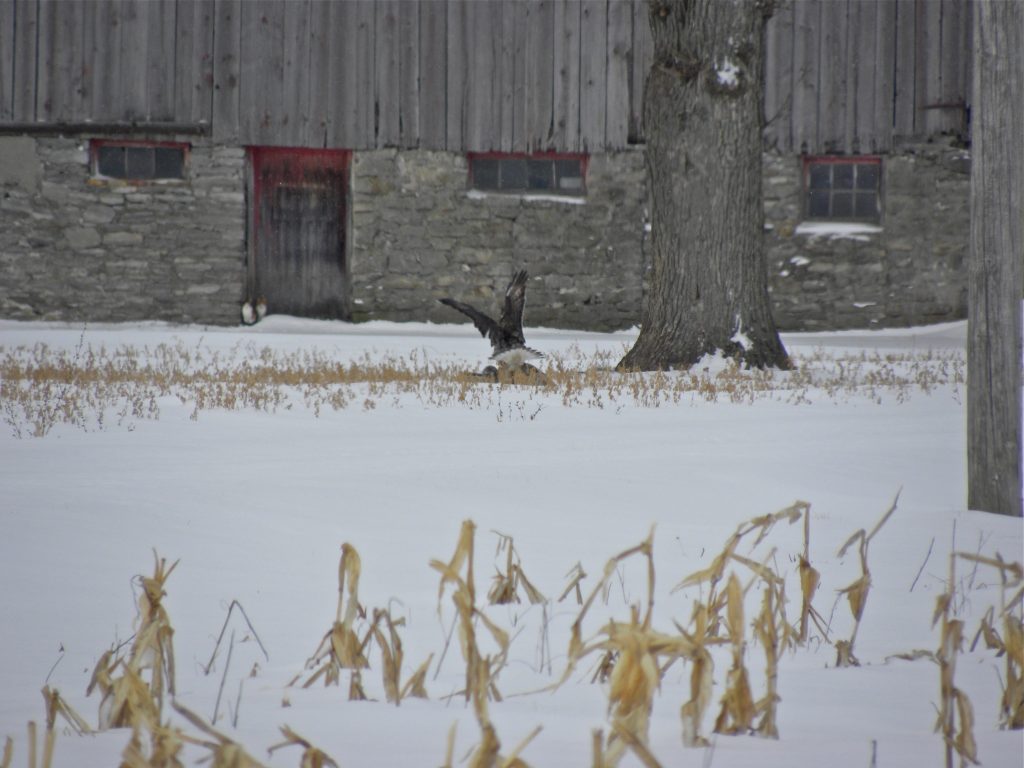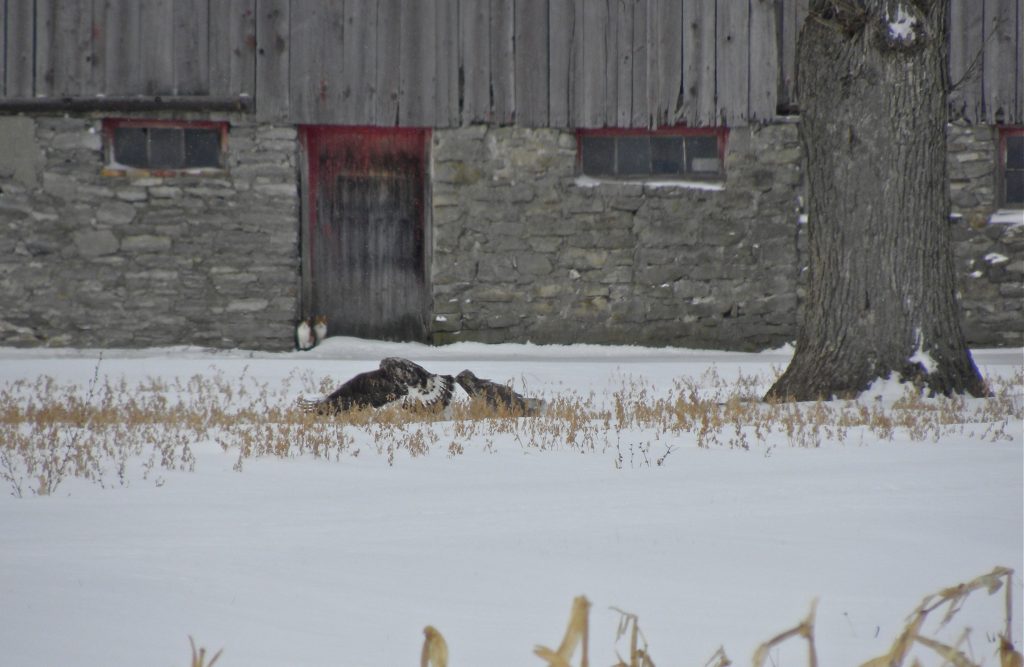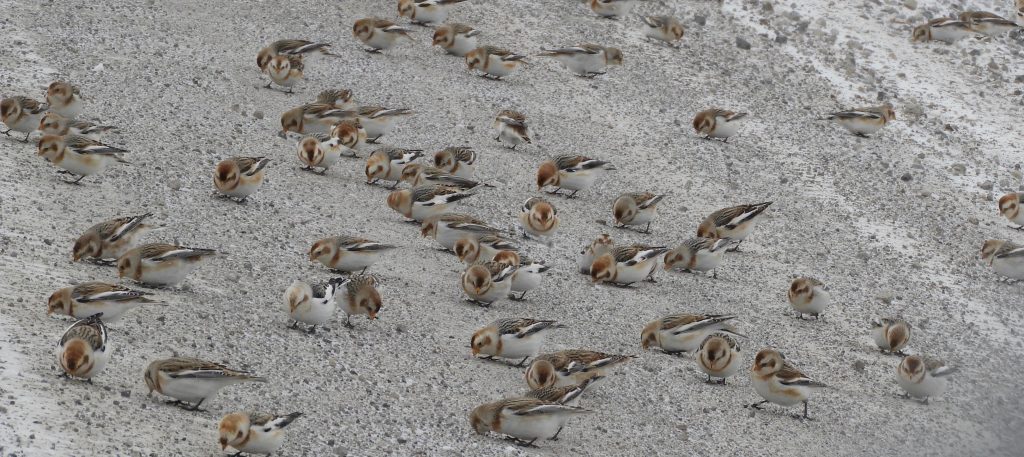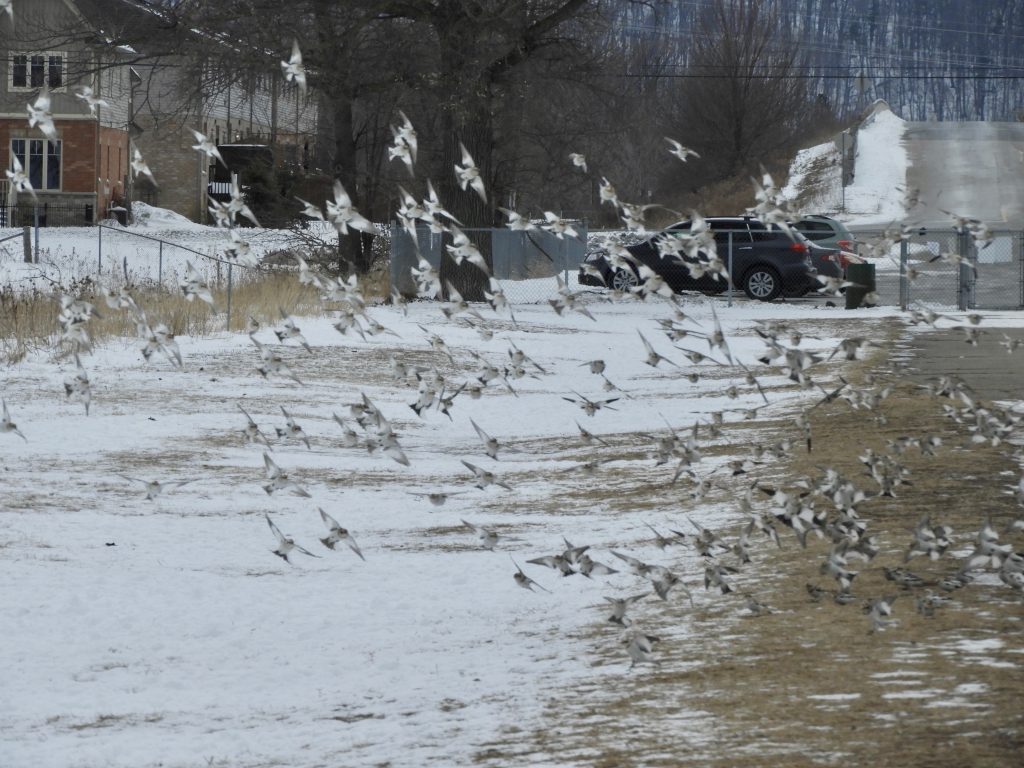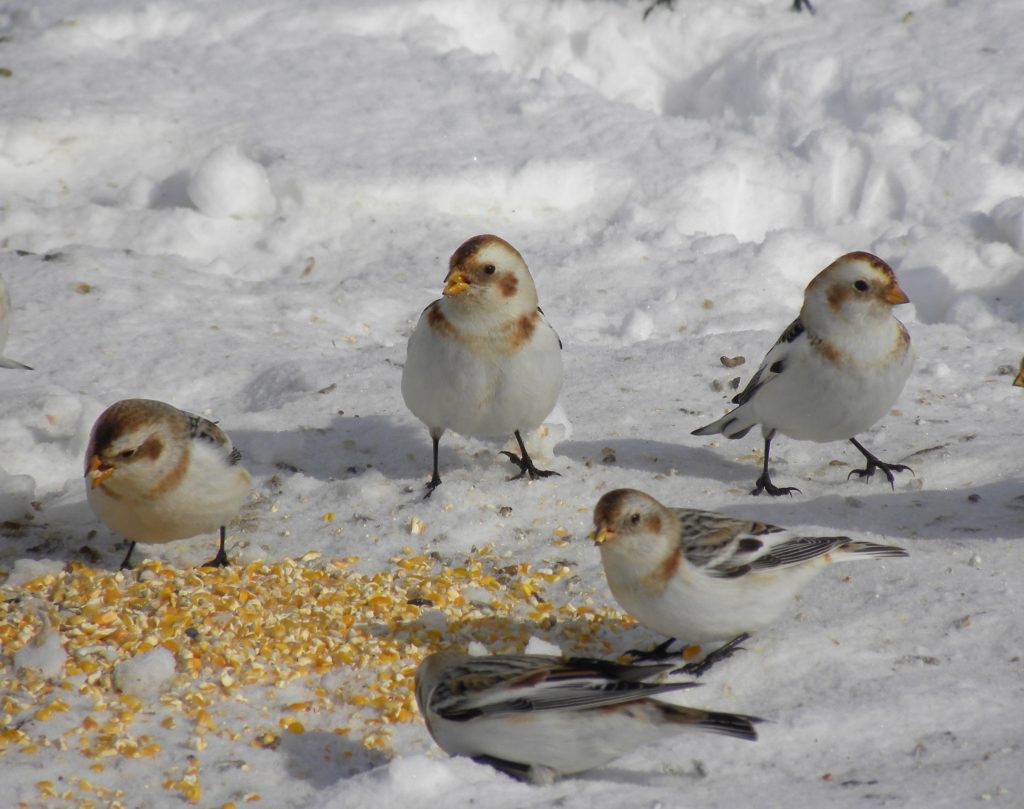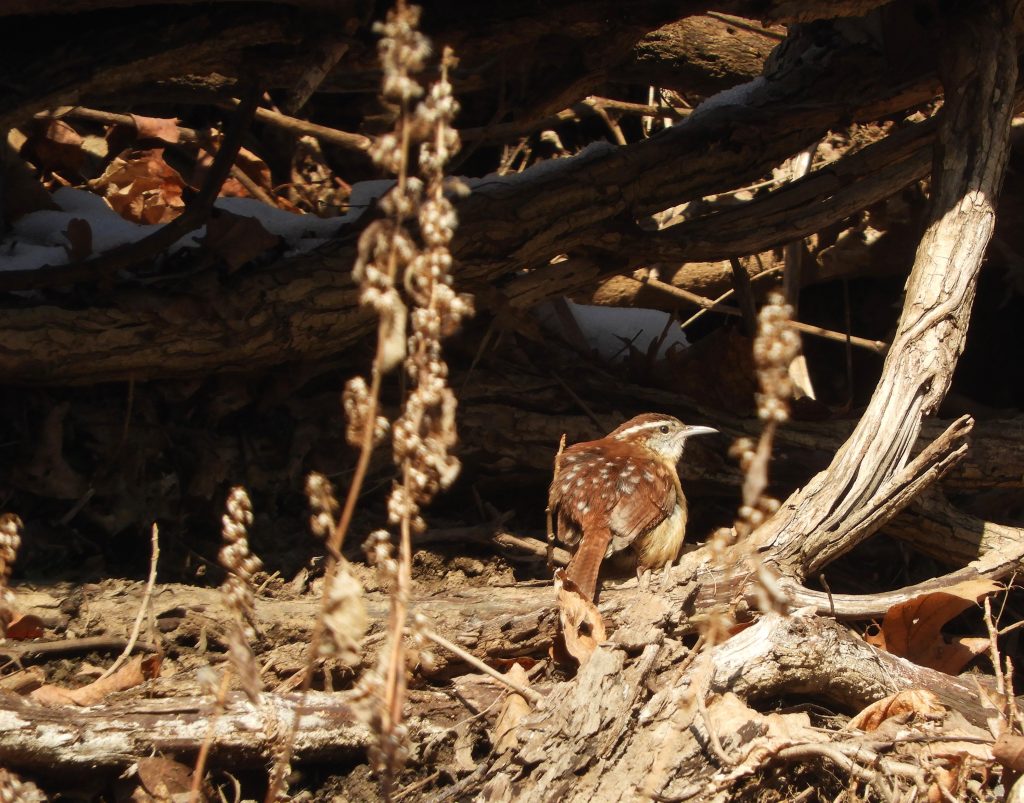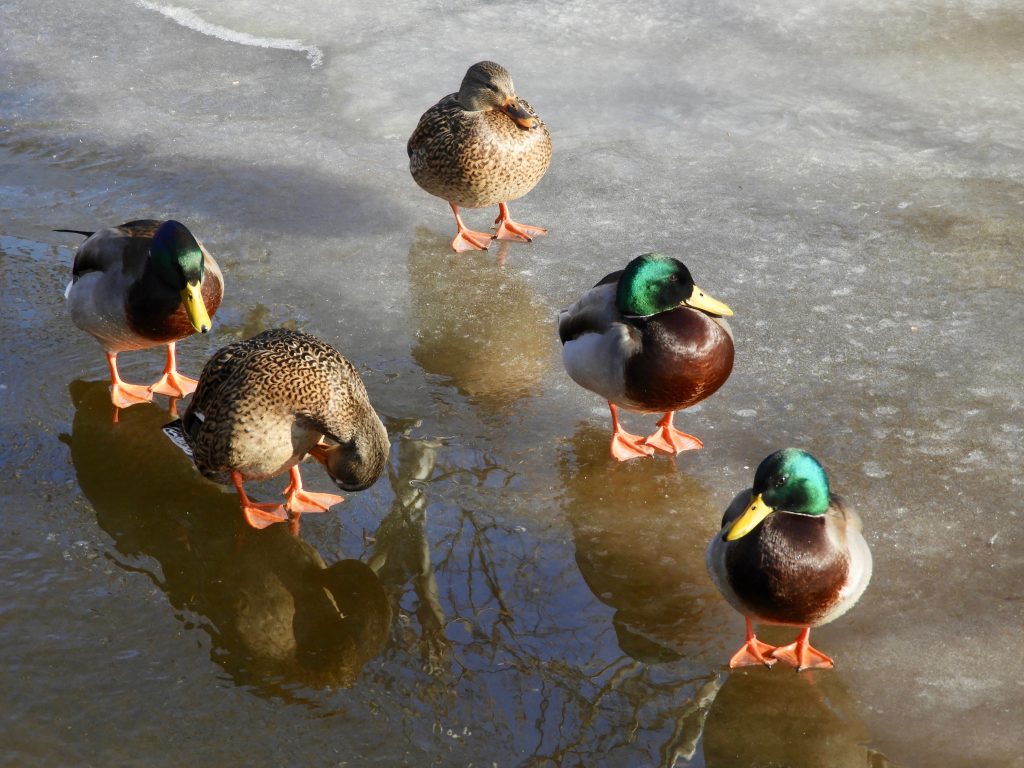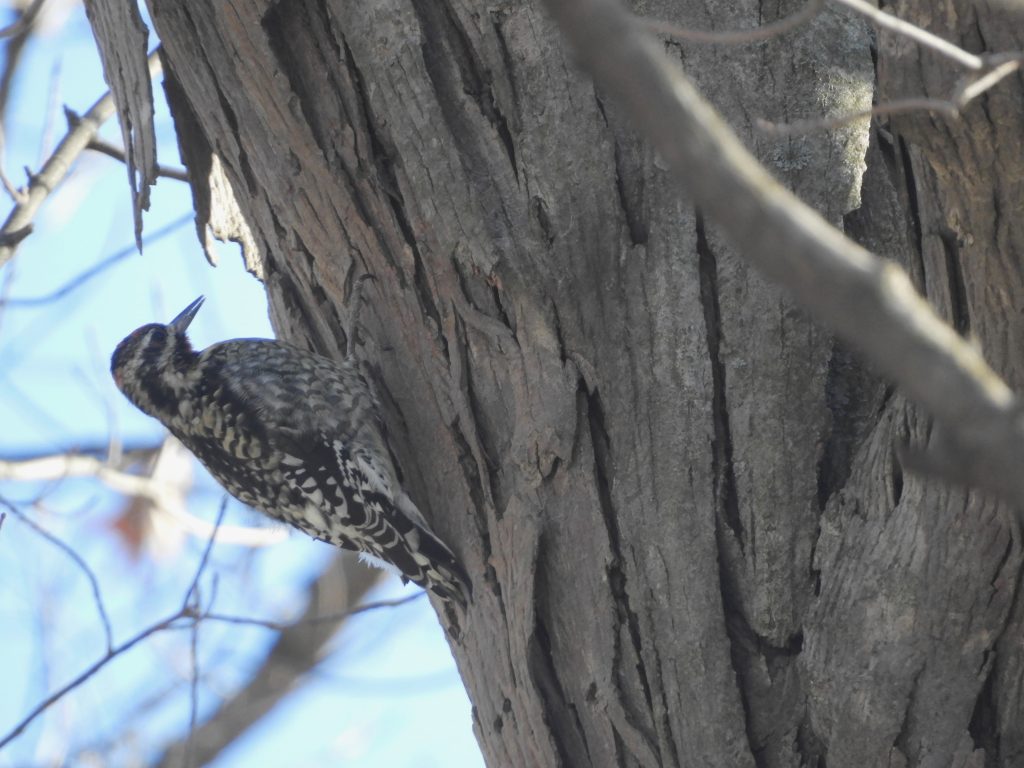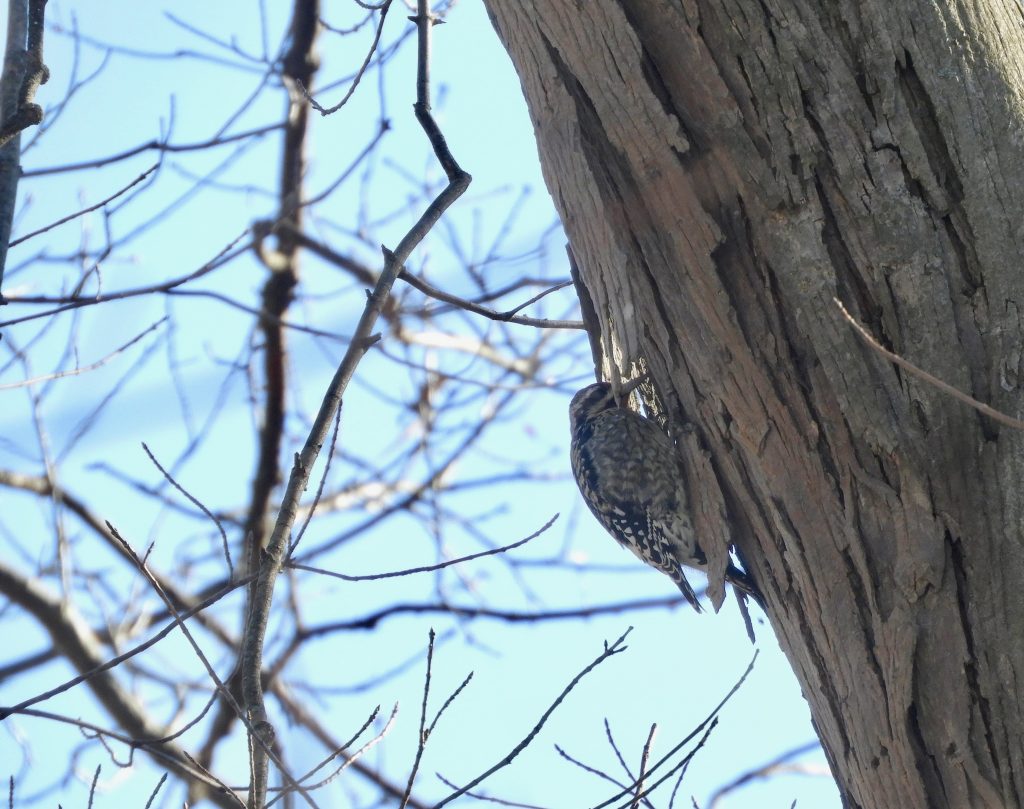Burlington Canal, Hamilton & Burlington, ON. February 14, 2022. I spent less than an hour birding today, it was just too cold. Not cold on a scale that makes news, but minus-8 C. which is okay-ish in the sun, but not in shade. Cold enough that my camera protested, not that it’s a particularly highly-strung piece of equipment, but it just stopped doing things it usually manages without complaint. With fingers hurting, or maybe numb – it was hard to tell, I came home reassuring myself that it was okay to quit.
I had hoped to capture more duck-diving photos like those of my last post but the canal was pretty empty. I turned my attention instead to Peregrine Falcons, to a pair that has nested on the superstructure of one of the bridges for a few years. They seem happy to stay around all winter, apparently the pigeon population is more than enough to keep them well fed.
It didn’t take long to find both male and female falcons. One, the male I suspect, was sitting quietly on the shelf they have always preferred as the nest site, while the other was a few steel girders below. Neither was particularly close to me so it meant coaxing my reluctant camera to do its icy best under the circumstances.
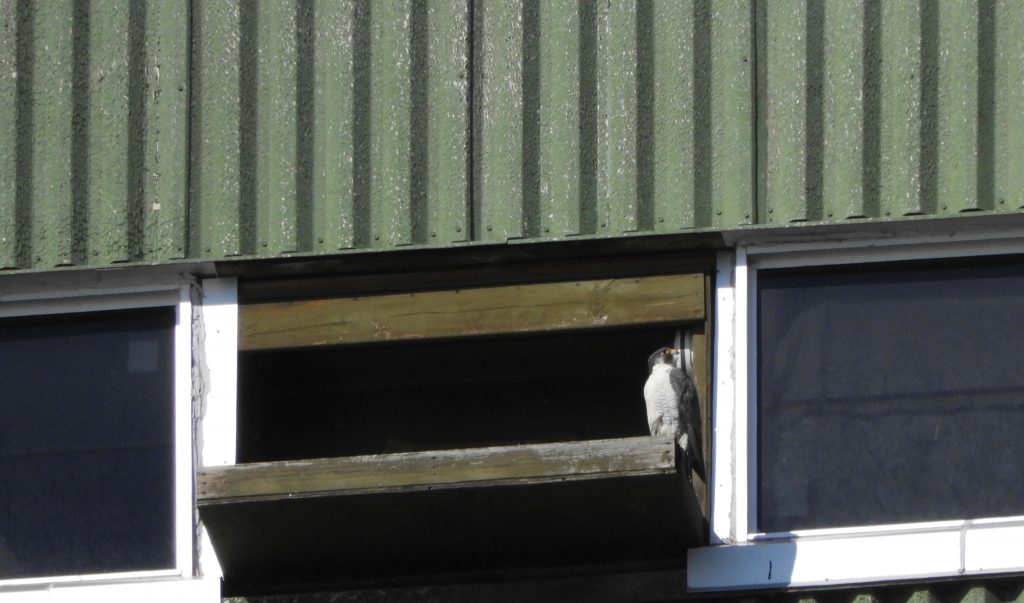 Here they are. The male (above) had turned to watch a low-flying plane and the female (below) was having thoughts about taking a flight of her own, but in the end decided against.
Here they are. The male (above) had turned to watch a low-flying plane and the female (below) was having thoughts about taking a flight of her own, but in the end decided against.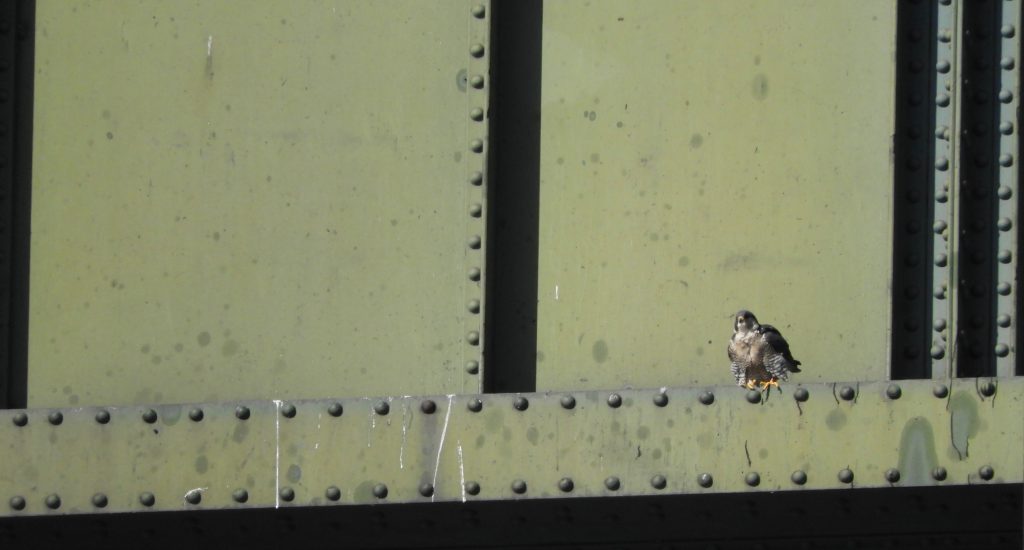
Not so long ago Peregrine Falcons were a rarity and on the edge of extinction in North America. But mankind sometimes does the right thing and banning DDT was one of them, it led to a rebound in their population; they’re much commoner now. I still love to see them, particularly on a purposeful chase as they make light work of the closest thing to avian sub-sonic flight. Peregrine Falcons make My Bird of the Day almost any day, but especially on this cold one.

